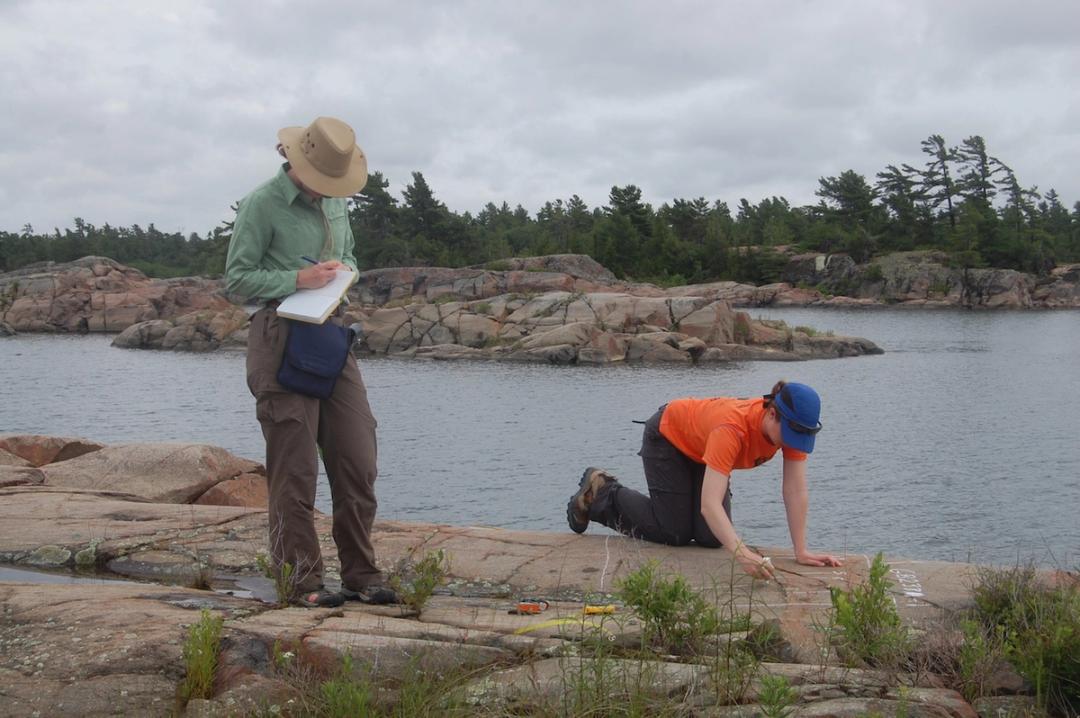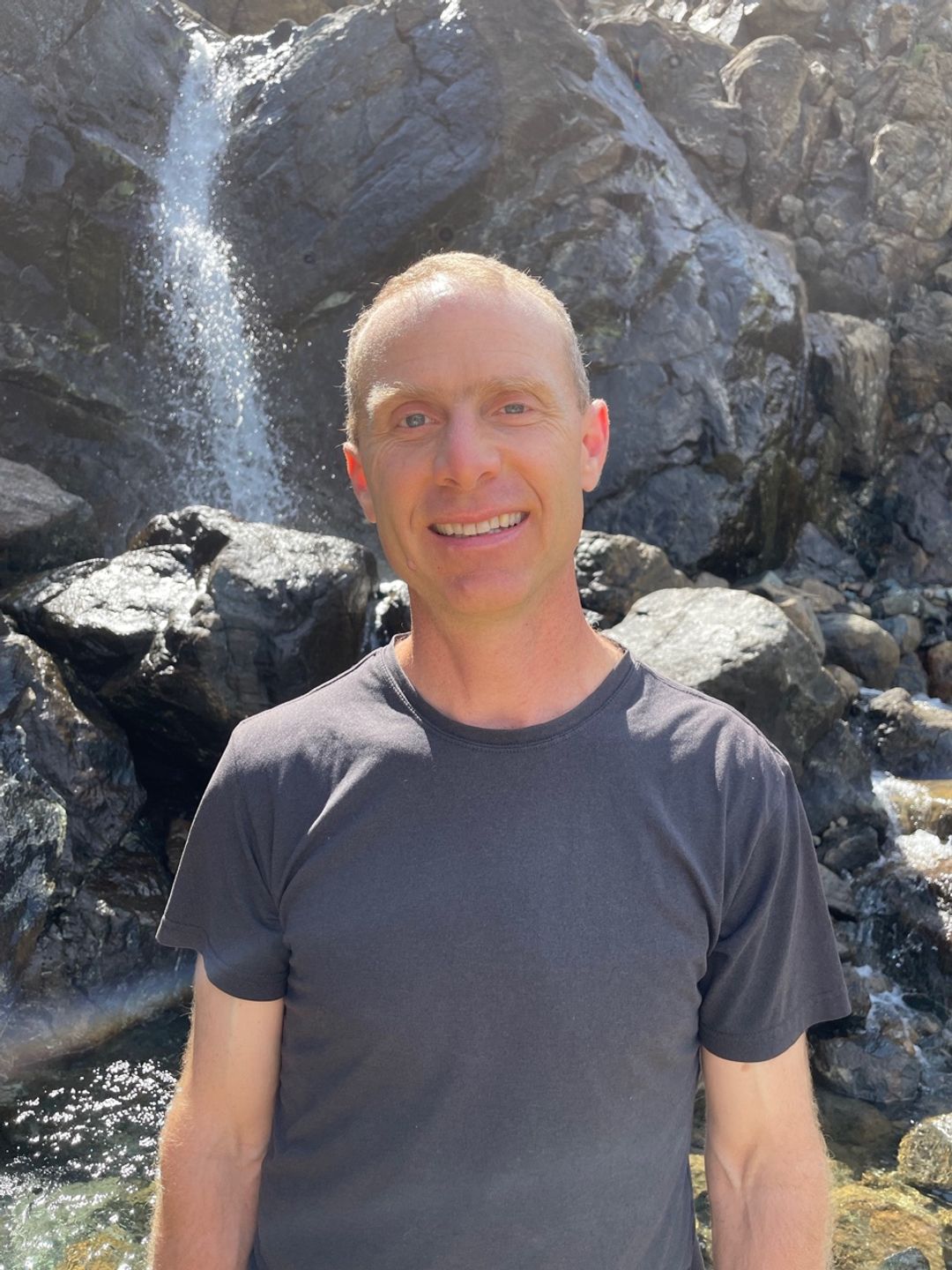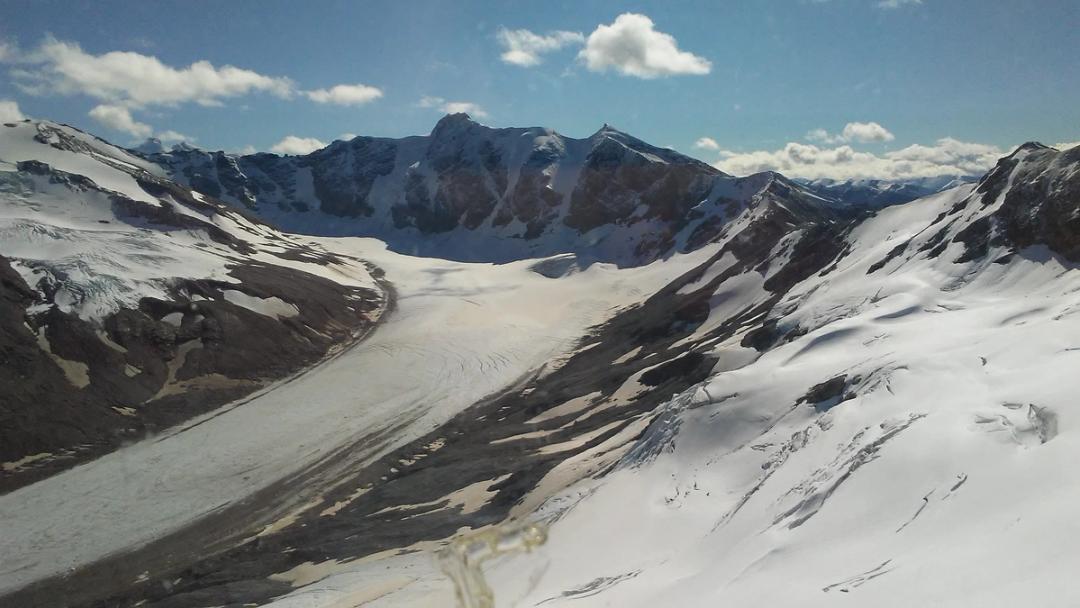Meet Dr. Christopher Gerbi
Geoscientist
Dr. Christopher Gerbi is a Professor of Earth and Climate Sciences at the University of Maine, where his research focuses on rheology—how rocks and ice deform—and how geophysical methods record material properties. At UMaine, he is also the Associate Dean for Research in the College of Natural Sciences, Forestry, and Agriculture and affiliated with the Center for Research in STEM Education.
STEM to the Sky
Jan 9, 2024
- Growing up, did you always want to become a professor?
- How did your experiences in undergrad shape your decision to pursue a career in the geosciences?
- What aspect of the geosciences captivated your interest?
- What do you enjoy the most about your role?
- What is your favorite thing to teach your students?
- What is the most interesting project you have worked on?
- Could you describe a typical day in your life?
- What exactly are these numerical models your team has developed?
- What skills would you say are important for your role?
- Did anything surprise you about your role or field when you first started?
- How can interested students learn more about earth science?
- What future advancements do you hope to see in the geosciences?
Growing up, did you always want to become a professor?
I wasn't sure what I wanted to go into. I just knew I wanted to do something that touched the outside—science discovery in some way or another. It happened to end up being something in the geological sciences, which has now expanded a bunch for me. I knew more of the characteristics of the job rather than the actual job that I wanted partly because I didn't know what being a professor would be like until after I got to college. One of the things that I've felt my kids are fortunate about is that they're growing up in a town with a university, so they get exposed to a lot of these things—whereas I and most people grow up in towns that do not have universities there, so they just aren't aware of or don't have the connection to the breadth of fields and experiences.

Dr. Chris Gerbi in the common area of the Earth and Climate Sciences building at UMaine. (Credit: Dr. Chris Gerbi)
How did your experiences in undergrad shape your decision to pursue a career in the geosciences?
I went to college thinking I would be a physics or astronomy major, but then that sequence of classes didn't start until spring, so I needed something to do in the fall. I went to an introductory section for Geology and they showed up in shorts and sandals and said, “We're gonna go explore Death Valley during spring break.” I said, “Sounds good to me.” So I took a geology course the first semester and just really enjoyed the people, the community, and the science that was part of that.
"I went to an introductory section for Geology and they showed up in shorts and sandals and said, “We're gonna go explore Death Valley during spring break.” I said, “Sounds good to me.”
Dr. Chris Gerbi
What aspect of the geosciences captivated your interest?
I eventually found my way into the field of tectonics, which is thinking about how continents are moving and what are the big root causes of earthquakes and volcanoes shaping the land at a global level. That was always what drew me in and what I did a lot of research in, but overall, what has kept me interested is being able to see the connection between mathematics, physics, and the observations. It was bridging the ability to go make observations by asking “Why did this happen?,” and then using analytical tools like electron microscopes or ion microprobes to get numbers—some hint towards answers. Then I use math and physics to do numerical modeling to bring all of the observations, analytical techniques, and modeling approaches together to answer questions.

A bird's-eye view of a shear zone we studied in Ontario, near the town of Parry Sound. I particularly like the skull formation the rocks made. (Credit: Dr. Chris Gerbi)
What do you enjoy the most about your role?
I really like it all. I think the part that holds my heart with it though, is getting out in the field and being able to see these natural features. I started a new project that involves snow, but I also have done work on ice and rocks. All of that really is going out and seeing what the natural world is producing and in what ways it might impact society. Then, ask questions about how it happened and in what ways can we better understand the processes that formed the planet that hosts us.
What is your favorite thing to teach your students?
With everything that I teach, one of my favorite connections to make is relating the first principles of physics—those basic things that help govern how the world runs—and using them as stepping stones to move towards explaining much more complex and practical Earth phenomena. One of those is really around plate tectonics: the reason we have all these continents or the tectonic plates moving across the globe is due to the primary driving factor of simply gravity acting on density differences, which is fundamental physics and some chemistry principles. Gravity and density differences are what drives so much of the Earth.
"With everything that I teach, one of my favorite connections to make is relating the first principles of physics—those basic things that help govern how the world runs—and using them as stepping stones to move towards explaining much more complex and practical Earth phenomena."
Dr. Chris Gerbi
What is the most interesting project you have worked on?
My kids always asked me, “Hey Dad, what's your favorite thing?” and I say, “I don't have favorites.” There are a lot of interesting things, which makes that question a hard one to answer. One of the things that have been really interesting in the past few years that we've been working on is earthquake faults and other ways that rocks break. But deeper down, a lot of the rocks flow and don't break. The graduate students, other professional colleagues, and I have been working to understand is that even though the rocks aren't breaking at a macro scale down deep, and they're staying coherent and flowing if you look at them at a certain scale, at the microscopic scale they are actually breaking or the processes that are making them flow is essentially mathematically equivalent to breaking. That's a really big difference in how we describe how the mechanical properties of how rocks can change over time. It’s being able to think of them all as breaking. Another colleague of mine who's been working on landscape development came to that conclusion for erosion. He has been describing erosion basically like breaking as particles are pulled off rocks. Linking the surface of the Earth to the earthquakes to down deeper has been a really fun intellectual journey.

Two graduate students collecting structural data at our field site near Killarney, Ontario. (Credit: Dr. Chris Gerbi)
Could you describe a typical day in your life?
Right now, I haven't been doing a lot of fieldwork, so a lot of what I do right now, especially in my administrative role, is looking at a computer. I certainly didn't expect to be spending as many hours on a computer as I am now. I also spend most of my time reading and writing. I get into the lab to look through a microscope as much as I can, but it's not a terribly large number of hours a day. I do end up spending a lot of time writing code for numerical models.
On a typical day, I definitely want to have as many personal interactions as possible with students and colleagues. It really varies day-to-day how much that happens. Being in a room with someone with a whiteboard and drawing and talking about science is really helpful, it’s also important to have the other time to go work by yourself, getting deep into the numerical models, writing, or reading journal articles/textbooks to prepare for making sure we understand the science that we're trying to publish about.
What exactly are these numerical models your team has developed?
We've benefited a lot from working with mechanical engineers on this for over 10 years at this point. We have built three “toolboxes” that relate the structure or microstructure of geological materials to their macroscopic property. If we think of a rock that has different minerals in it, let's just say five millimeters by five millimeters, we can draw out the shapes and patterns and where all the different minerals are. For example, we might have quartz, feldspar, and mica, know where they are, and what their orientations are because different minerals have different properties in different orientations. We can take those minerals, draw them out in the computer and say what the orientations are.
One of our toolboxes can calculate what seismic waves would do as they go through that rock so we can figure out how fast those earthquake waves would travel in different directions. Why that's important is because earthquake waves are really the way we understand the interior of the Earth. Major earthquakes like the one that affected Japan a few years ago send out waves worldwide, and depending on the path that those waves take through the Earth to different receivers in North America, Europe, South America, etc, we can learn what the temperature is and how much liquid might be in different parts of the Earth. Knowing the velocities of seismic waves is really important.
Another toolbox can build whatever structure of minerals or rocks that we want in there. If we think about shearing it, squishing it down, or pulling it apart, it would calculate where would be points of high stress and where would the rock most be likely to break. Or we can calculate what its overall bulk properties are.
The third toolbox that we've developed is for doing larger-scale seismic or radar surveys. Again, we build an underground structure numerically. Then, we say we want to run our radar detector across this part of it, and it will send down the waves and calculate what the receivers would be like. That way, we can simulate what radar seismic surveys might see. Then the coding part of that is being in the detailed text files with Python, Matlab, or sometimes Fortran. Those are the main languages we're using these days.

Dr. Chris Gerbi at the Tablelands, Newfoundland - a geologically special place where part of Earth's mantle is now exposed on the surface. (Credit: Dr. Chris Gerbi)
What skills would you say are important for your role?
The job is what you want to make of it, so there is no one right set of skills. The biggest qualification is curiosity. If you're doing research, that means you want to find out answers to questions. The teaching part of it is that you want to be able to effectively share what you have learned with people who can go on to use it in other ways. Most of the people who come through university don't go on to careers in research. They go on to careers as someone trying to improve water quality or look at seismic hazards or decide what's going to happen if an oil tank leaks underground. We want to make sure that we're sharing the best information we have so that they can go do their future jobs the best they can. In terms of skills, it's curiosity and being able to work informally. That's where the learning happens. It’s not all within the four walls or by some script or lecture—it's really a lot of interaction. Being able to embrace that is really valuable.
For more specific stuff about what I do, I think organization is really important—being able to take detailed notes and keep track of observations so you can document it and other people can either reproduce or trust what you've done.
It certainly isn't true for everybody, but I really appreciate linking math and physics and chemistry to the earth sciences. One example of that is the equation that describes how the interior of the Earth flows, how oceans flow, how glaciers flow, and how the air in the atmosphere flow. It's all the same equation—the Navier-Stokes equation—but it's different values for the constants in the equations, and different terms are more important in one place or another. One skill that I really appreciate is when people can look for those cross-field connections to see how the fundamentals tie together.
Did anything surprise you about your role or field when you first started?
I was in graduate school thinking there was no way I could both teach and do research at the same time because it seemed like it was going to be too much. I either needed to be a research person or be in an institution that does teaching. So, I actually was surprised that I was able to feel comfortable in a role that did both because I expected that it was going to be too much of a mental challenge to try to be good at teaching and be good at research.
One of the reasons that it works so well is that at research universities like the University of Maine, we have such a strong vertical integration between the undergraduate students, the graduate students, the staff, and the faculty. Everybody works well together. A big part of that is that the graduate students are a major part of the research engine, but also are really good at mentoring the undergraduate students.
How can interested students learn more about earth science?
I don't know how true it is globally, but at least in the United States, the national parks are wonderful. Many of those public spaces have a lot of the basic interpretations developed, but these are also places just of magnificence and wonder. These are prominent features with some basic explanations, so you can ask, “Why is it there?” and there are some answers to that. From there, you get into more detailed questions. I find that for the earth sciences realm, finding places that you love and understanding why they look the way they do is a great starting point.

A view of Jarvis Creek Glacier, Alaska, where we studied the development of ice fabric in the margins. (Credit: Kate Hruby)
What future advancements do you hope to see in the geosciences?
The geosciences are currently not very diverse. There have been a lot of discussions lately and a lot of activity trying to make sure that everybody, regardless of say disability status or if they're interested in being a field scientist or an engineer, starts to feel that they can find more opportunities. By expanding the number of voices in the room and the experiences of those voices, we'll be able to make a lot more discoveries.
One of my big hopes is that there will be a lot more understanding from the general population about uncertainty. Climate change is one big topic obviously. We still have a long way to go for the general public to really understand what error bars are when we're talking about predictions. For example, knowing about a particular hurricane doesn't mean that there's climate change, but the pattern of a lot more intense hurricanes does point to the changing climate. I'd love to see more of that communication and understanding around uncertainty.
I also hope that the field does not forget the wonderful, awe-inspiring moments like the Webb telescope. The images that the telescope—which was a very expensive project that took 20 years to build—is producing are fantastic and they inspire people to understand more. I hope we continue projects like that to get people interested.
"The geosciences are currently not very diverse...by expanding the number of voices in the room and the experiences of these voices, we'll be able to make a lot more discoveries."
Dr. Chris Gerbi